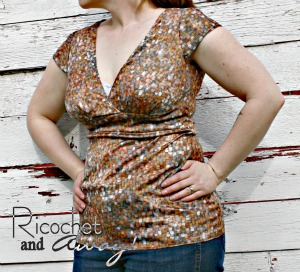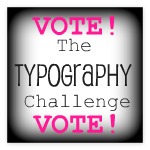 |
| Kay Whitt Designs Tote Bag in Three Sizes M5822 [source] |
Of course it is almost painful for me to follow a pattern exactly without tweaking it just bit. I'm the same way with recipes--it must be a personal defect. Anyway, the alterations I made were:
- Skip the zip. The zip would be nice for a purse, but diaper bags need to be accessible. The tote is tapered so the opening is already small. A zip would have made the opening even smaller. It would have been very difficult to find important things like binkies and nail clippers in this deep dark bag.
- Exchange novelty cotton fabrics for vinyl and corduroy. The lime green vinyl and funky corduroy print were dying to be used together! Plus, I had this soft brown vinyl that I used for the handles that went perfectly.
- Customize the interior pockets. One single patch pocket for a diaper bag is not optimal.
- Exchange buckram and fleece for Peltex heavy interfacing.
Here's some pics of my customized interior pockets.
You can really tell which pics were taken in natural light and which were taken in my craft dungeon:
I made a patch pocket that mimicked the shape of the bag. The pattern included a similar pocket, but I didn't feel like going through the trouble of cutting it out. I added some bias tape to the top edge of the pocket. With the excess bias tape, I attached a toggle clasp that I stole from a used purse. This was a fast and easy way to include some handy hardware. I attached the pocket to the lining with a double row of stitching in a light pink thread.
For the pockets on the other side, I simply cut a panel exactly the same shape as the lining, but about 5 inches shorter. I finished the edge with bias tape again and basted the edges that would eventually be enclosed in the side seams. I divided the pocket in half with row of stitching. I knew the top of the center stitching needed to be very secure because it would experience a lot stress with regular use. So instead of sewing a little square on the bias tape, I stitched a couple big hearts. I didn't stop there either. I took ended up adding some embroidery as well. You can also see I added a row of my Ricochet ribbon that I blogged about a loooooooong time ago.
In straying from the recommended fabrics, I had to do some things differently.
- You can't iron vinyl and Peltex sucks up glue. Since I couldn't iron-on the Peltex to the vinyl I decided to glue it on. I used regular old Tacky Glue in the gold bottle. The Peltex sucked it right up and it didn't stick a lick. So I took some Mod Podge and coated a side of the Peltex with it, effectively sealing it up or priming it to take the glue. After it dried, I used the Tacky Glue with great results!
- Regular polyester thread and 80/12 needles weren't going to cut it. To effectively sew the vinyl I switched to a heavy-duty 110/18 needle, heavy-duty top-stitching thread, and increased my stitch length to 4. [I sew on a Singer 4411 HD]
- Watch out for bulky seams! The curved sides and the thickness of the vinyl and corduroy were hard enough to sew without adding the bulk of the Peltex into the seams as well. To remedy this, I trimmed all the Peltex to fit within the seam allowances.
In conclusion, here are the pros and cons, IMHO, of M5822:
Pros:
- Cute shape.
- Simple design.
- Easy to follow instructions.
- Easily customized.
- Comes in 3 sizes. I used the largest size.
Cons:
- Finishing the top with a strip of binding was tedious. I couldn't risk making extra holes in my vinyl so I ended up hand sewing the binding to the lining. I prefer the method were you stitch the lining to the bag, right sides together, and then pull the whole thing through a opening in the lining.
- The smaller 2 sizes don't appeal to me. I would have preferred a even larger size though.
- The recessed zipper would make the opening very small, even in the largest size. I suggest an inner tab with a magnetic clasp instead.
The tote is easy enough to sew that a reasonably knowledgeable sewist could duplicate it without having to buy the pattern. Once you made the front/back panel, all the rest of the pieces are rectangles. Easy, right?
I'm thinking about making my own tote based off this pattern from the brown vinyl I used for the handles. I have enough of the green vinyl to use as an accent. Neon colors are so "in" right now. I hope I can finish and use my tote before they are "out"!!!
Hope you all find this review useful. I would love some more pattern suggestions for large tote bags, if you have any. Are any you Kay Whitt fans like myself? What's the last pattern you've sewn?
Happy crafting and big hugs from Montana,














































